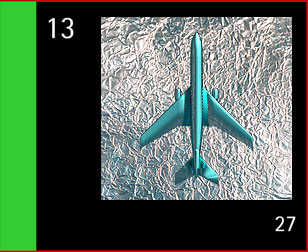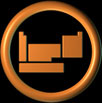|
|
|
|
|
|
|
|
|
|
|
|
 |
|
|
|
|
|
 |
|
|
Discovered : 1825 by Hans Oersted
Isolated in Copenhagen, Denmark
Origin : From 'alumen', the Latin for the mineral alum.
Description :
The most abundant of metals. A lot of energy is needed to extract it from its ores : however, this is worthwhile because it does not rust and is easy to recycle. It is lightweight but tough and is widely used for window frames, aircraft parts, engines, kegs, cooking oil, drinks cans, etc. There may be a link between aluminium in the diet and Alzheimer’s disease (a form of senile dementia), but only a small amount of what we take in with our food is absorbed by our bodies. Foods with above average amounts of aluminium are tea, processed cheese, lentils and sponge cakes (where it comes from the rising agent). Cooking in aluminium pans does not greatly increase the amount in our diet except when cooking acid foods such as rhubarb. Some indigestion tablets are pure aluminium hydroxide !
Image :
Aerial view.

Aluminium animation - click the icon above to launch. (Quicktime required)
For more 109 Project animations click here.
|
|
|
|
|
|
 |
|
|
|
|
 |
|
|
|
|
|
|
 |
|
|
|
|
|
|
|
|
 |
|
|
|
|
|
|
|
|
|
|
|
|
|
|
|
|
|
 |
|
|
|
|
 |
|
|